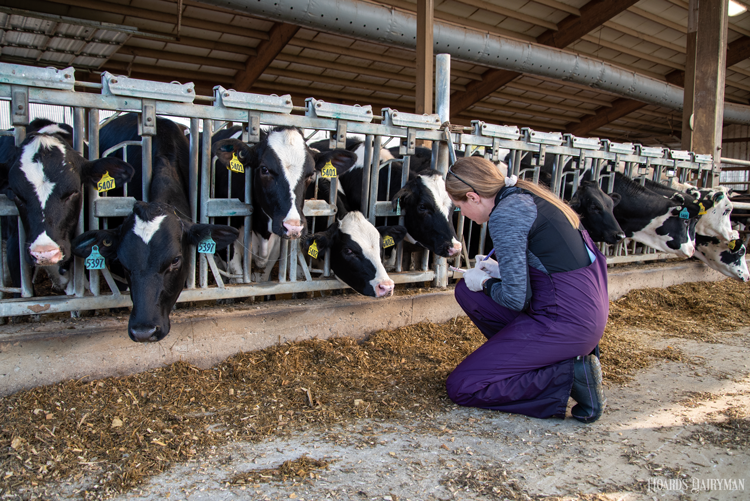
Antibiotics are a valuable tool for animal and human medicine. They can have a powerful effect on the body, but when they are overused, they can lead to microbial resistance that could render them useless for future cases.
Good stewardship of antibiotics refers to the idea of promoting their optimal use, said Simon Dufour during the National Mastitis Council Annual Meeting. Those efforts preserve their efficacy for future disease in both animals and humans and can save money with a more targeted approach.
The University of Montreal professor of veterinary epidemiology described that a first pillar of antibiotic stewardship is disease prevention. We often use antibiotics in this way, such as for dry-off, injectable products for calves, and more. Each farm likely thinks their use is at a “normal” level, but Dufour illustrated that a Canadian study from 2020 found that the number of days over a dairy animal’s lifetime that it receives antibiotics actually varies widely between herds — from just a few to potentially dozens.
Dufour encouraged producers to consider how they can prevent disease to limit the need for these types of antibiotics. This may mean adjusting milking procedures to reduce mastitis incidence or reevaluating calf facilities to cut down on respiratory issues.
The second pillar of antibiotic stewardship Dufour described is knowing when an animal truly needs antibiotics. In the case of mastitis, this can be accomplished by culturing milk to know if an antibiotic can be effective against the causative pathogen. He noted that delaying treatment on mild and moderate mastitis cases for 24 hours until a culture result can be returned has been shown to have no impact on the cow’s health or future somatic cell count (SCC).
Using antibiotics in the right cases can also be applied to selective dry cow treatment (SDCT). Dufour advised that effective SDCT relies on good criteria to find the cows that will benefit from these antibiotics. Make sure you have reliable SCC data, good records on mastitis cases, and correct teat infusion technique. A bulk tank SCC of less than 250,000 cells per milliliter should be the baseline to consider this practice, he said.
As long as a teat sealant is applied to all cows, Dufour described that only giving dry cow antibiotics to animals that need them can reduce antibiotic use by 50% to 90% with no impact on infection rate at calving, mastitis, SCC, culling rate, or milk yield in the next lactation. Dry cow antibiotics are generally effective for only five to 10 days after calving, he noted.
If you determine that a sick cow does need an antibiotic, make sure you use the right drug at the right dosage and at the right duration. Antibiotic approvals will vary by location. Some products should be saved for human use; that doesn’t mean we can’t use them where approved, but Dufour said they shouldn’t be the first option.
He described that in a survey his team did on antibiotic usage, only 17% of farmers were following the directions stated on the drug label. Most often, cows were being treated for too long. This not only puts more antibiotics in their system than necessary, which raises the risk of resistance, but it is extra costly in drug expense and discarded milk.
Stewardship does not mean leaving sick cows untreated, Dufour concluded. It is a broader approach that preserves their use in all forms of health. That’s something any caretaker should strive for.








